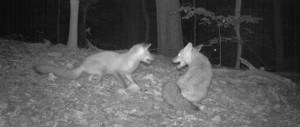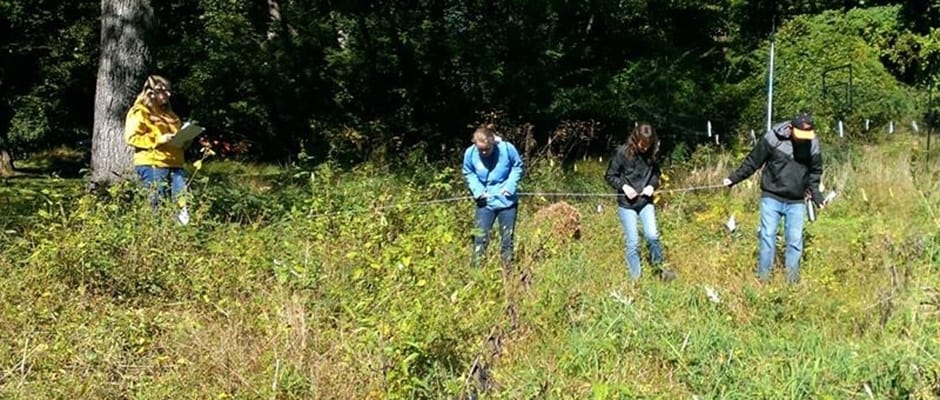Share this article
Deer, Bats, Foxes, Oh My!
Members of the University of Maryland (UMD) Student Chapter in College Park, MD have been busy conducting several research projects in their surrounding community. Current on-going studies include e-Mammal camera trapping, deer density surveys and bat acoustics projects in Woodend Nature Sanctuary in Chevy Chase, MD, a 40-acre nature sanctuary less than ten miles from the nation’s capital.
eMammal is a project available to volunteer scientists in partnership with the Smithsonian Institution and North Carolina Museum of Natural Sciences. The goal of the project is to record mammals throughout the mid-Atlantic and Southeastern regions of the United States. “Camera traps” are placed across various sites to record species’ distribution, abundance, and activity. UMD’s Student Chapter is in their second year of conducting the study and currently has several camera sites stationed along the Potomac River. Species recorded so far include white-tailed deer, red fox, Virginia opossum, and raccoon.

A camera trap set by the UMD Student Chapter captures two red fox near the Potomac River.
Image Credit: Shannon Pederson
Shannon Pederson, a PhD student at UMD and a teaching assistant for UMD’s wildlife courses, has been teaching student chapter members field techniques through a variety of wildlife surveys. Students are gathering data on the deer population size through the use of deer pellet counts and baited camera traps in the Woodend Nature Sanctuary. Bat acoustic surveys are also being conducted through the use of full spectrum bat detectors. She has also taken members to help check small mammal traps for National Park Service.
The projects offer members the opportunity to learn techniques in an outdoor classroom setting. Student Chapter President Sze Wing Yu says, “The most enjoyable part of our chapter’s research projects are being outdoors, meeting our members, and exploring nearby greenspaces, all the while contributing to real and useful scientific research. It is interesting that so many natural areas with urban wildlife exist around our school, and these ongoing projects benefit our current and future students by letting them discover these areas and providing hands-on experience in fieldwork techniques.”
Find more information on the chapter’s current projects at their Facebook page.
Sources: Shannon Pederson, Sze Wing Yu, eMammal, Woodend Sanctuary
Header Image:
Member of The Wildlife Society University of Maryland Student Chapter estimate urban deer density by counting fecal pellet groups and using remote cameras at Woodend Nature Sanctuary.
Image Credit: Shannon Pederson








